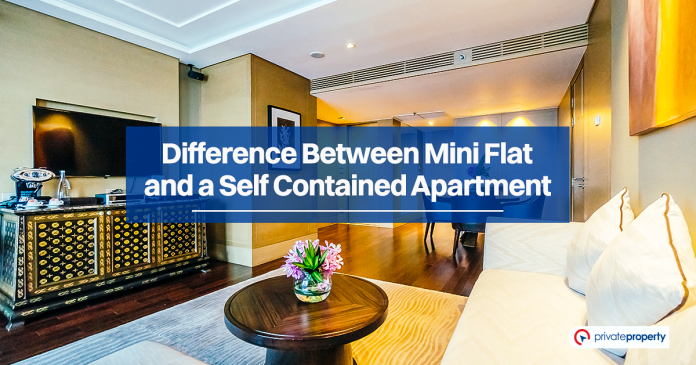Difference between a mini flat and self contained in Nigeria
In the realm of real estate, finding the ideal living space that suits your needs and preferences can be a daunting task. As urban areas continue to evolve, new terminologies and housing options emerge, leaving potential tenants or buyers puzzled by the differences between various types of accommodations. One such common conundrum revolves around distinguishing between mini flats and self-contained apartments.
Mini flats and self-contained apartments are two popular housing solutions that cater to the needs of individuals or small households. While they may share some similarities, it is crucial to understand the subtle distinctions between these two dwelling options to make an informed decision when searching for a new place to call home.
In this blog post, we will shed light on the disparity between mini flats and self-contained apartments, dissecting their key features, advantages, and potential drawbacks. By the end, you will have a clearer understanding of these housing types, empowering you to make a well-informed choice that aligns with your lifestyle and requirements. So let’s dive in and unravel the differences between mini flats and self-contained apartments, providing you with the knowledge to navigate the real estate market more confidently.
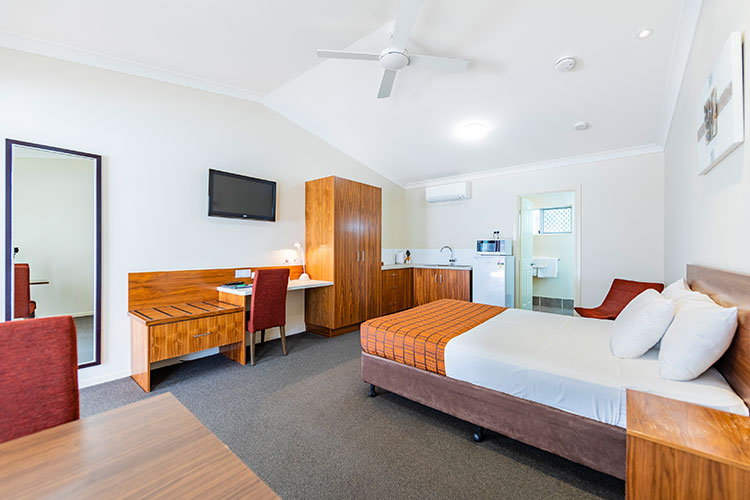
What is a self-contained apartment?
A self-contained apartment is a type of living space that provides all the essential amenities and facilities within a single unit. It is designed to be a self-sufficient living area that typically includes a bedroom, a living area, a kitchen, and a bathroom, all contained within the boundaries of the apartment itself.
In a self-contained apartment, residents have exclusive access to their private living quarters, including the kitchen and bathroom facilities. This means that they do not need to share these spaces with other tenants or occupants of the building. The apartment is equipped with its own independent entrance, allowing for a greater degree of privacy and autonomy.
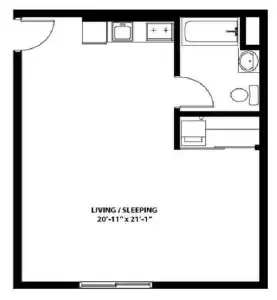
With the growing desire to escape the conflicts and tensions often associated with the traditional “face-me-I-slap-you” type of accommodation in Nigeria, self-contained apartments are gaining popularity at a rapid pace. More and more individuals are opting for these self-contained living spaces, drawn by the allure of privacy, tranquility, and independence they offer.
SEE ALSO: Room Self-contained for rent in Nigeria.
Self-contained apartments are often found in multi-unit residential buildings, such as apartment complexes or high-rise towers. They are popular among individuals or small households who value independence, convenience, and the ability to manage their own living space without relying on communal amenities or shared facilities.
The size and layout of self-contained apartments can vary significantly, ranging from compact studio units to larger one or two-bedroom configurations. This flexibility allows individuals to choose an apartment size that best suits their needs and budget.
What are Mini-flats?
A mini-flat refers to a type of apartment that encompasses a single bedroom, a sitting room, a kitchen, a bathroom, and a toilet, all enclosed within the confines of the unit. It is akin to the conventional “room and parlour” configuration, with the key distinction being that all the mentioned facilities are en-suite within the mini-flat.
In a mini-flat, residents enjoy the convenience of having their kitchen, bathroom, and toilet incorporated into their private living space.
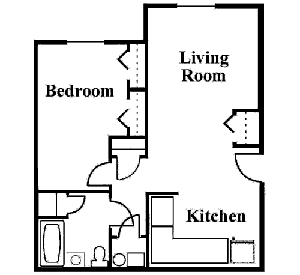
These apartments are designed to maximize space efficiency while providing the basic amenities necessary for comfortable living.
Unlike self-contained apartments, mini-flats have separate rooms, one living room and the other one dedicated for bedroom.
Mini-flats are well-suited for individuals or couples who prioritize affordability and simplicity in their housing choices. They are popular in densely populated urban areas, where space is limited and rental costs are relatively high. Due to their smaller size, mini-flats are generally more budget-friendly compared to larger apartments or self-contained units.
SEE ALSO: Mini-Flats for Rent.
While mini-flats may have a compact footprint, they typically feature essential amenities such as a kitchenette equipped with basic cooking facilities (e.g., a stove or microwave), a small dining area, and a private bathroom. Some mini-flats may also have built-in storage solutions to optimize the utilization of space.
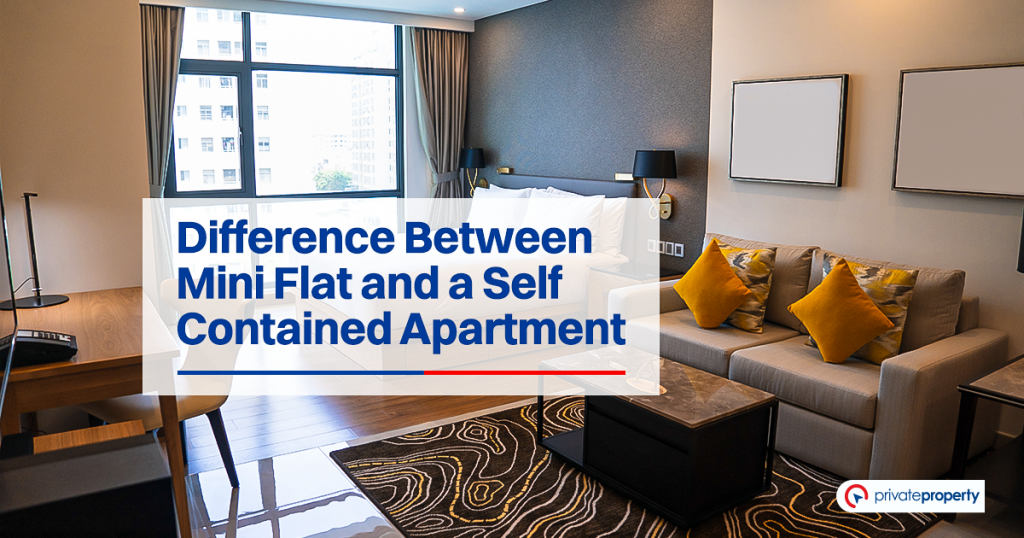
Although mini-flats offer a smaller living area compared to other housing options, they can still provide a comfortable and functional living space for those who prioritize efficiency and affordability without compromising on the essentials.
In Conclusion, understanding the differences between self-contained apartments, and mini-flats is crucial when searching for the ideal living space. While a self-contained apartment encompasses all the necessary amenities within a single unit, providing exclusive access to a kitchen, bathroom, and other facilities. On the other hand, mini-flats combine a bedroom, sitting room, kitchen, bathroom, and toilet within a compact space, offering a more cost-effective and efficient living option.
Additionally, self-contained accommodations can vary in types, such as studio apartments or bachelor apartments, depending on the specific design and local housing market. Flats can be self-contained or non-self-contained, depending on whether they have shared facilities or individual amenities within each unit.
By familiarizing yourself with these distinctions, you can make an informed decision that aligns with your lifestyle, preferences, and budget when searching for the perfect living space.
FAQs
What is the difference between self-contained and one-bedroom?
The main difference between a self-contained apartment and a one-bedroom apartment lies in the layout and amenities. A self-contained apartment typically consists of a single unit that includes a bedroom, living area, kitchen, and bathroom, all enclosed within the apartment. On the other hand, a one-bedroom apartment typically has a separate bedroom, a living area, a kitchen, and a bathroom that may or may not be en-suite. In summary, a self-contained apartment combines all the necessary facilities within a single unit, while a one-bedroom apartment has a separate bedroom.
What are the types of self-contained accommodation?
There can be various types of self-contained accommodation, including studio apartments, bachelor apartments, or even certain configurations of flats or houses that have all the necessary amenities enclosed within the unit. The specific types and designs of self-contained accommodations can vary depending on the region and local housing market.
Are flats self-contained?
Flats can be self-contained or non-self-contained, depending on their design and layout. Some flats may be designed as self-contained units, where residents have exclusive access to their own kitchen, bathroom, and other amenities within the flat itself. However, other flats may have shared facilities, such as communal kitchens or bathrooms, which would make them non-self-contained.
How many blocks can build a mini-flat?
The number of blocks required to build a mini-flat can vary depending on the architectural design and size of the blocks.
Does self-contained mean furnished?
No, self-contained does not necessarily mean furnished. The term “self-contained” refers to the arrangement of amenities within a living unit, indicating that the unit contains its own private kitchen, bathroom, and other essential facilities. Whether the self-contained apartment or flat is furnished or not depends on the specific rental or purchase agreement. It’s important to clarify with the landlord or real estate agent whether the self-contained accommodation comes furnished or unfurnished.

